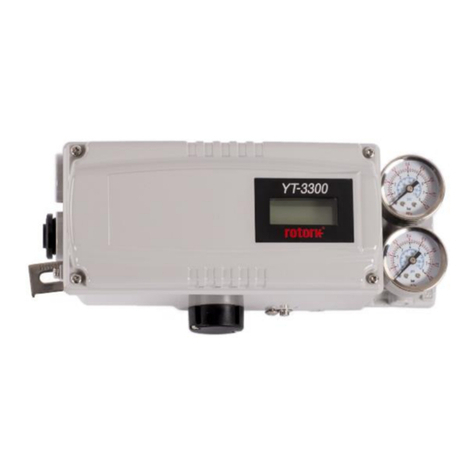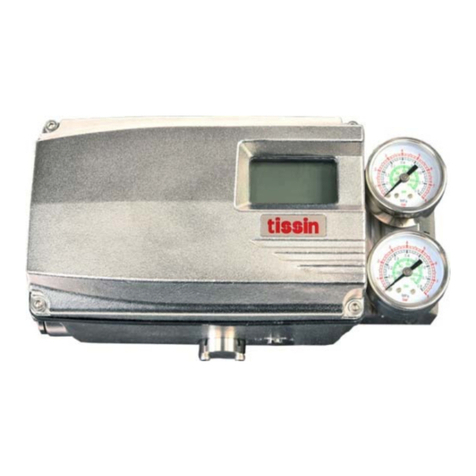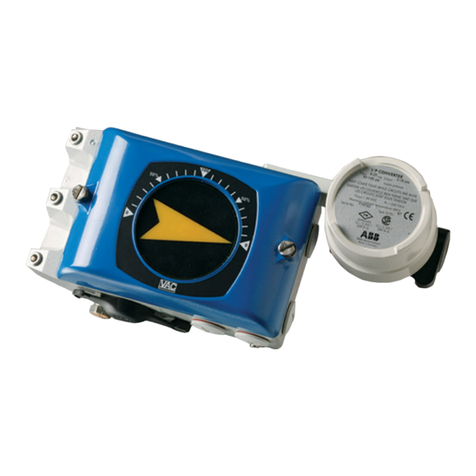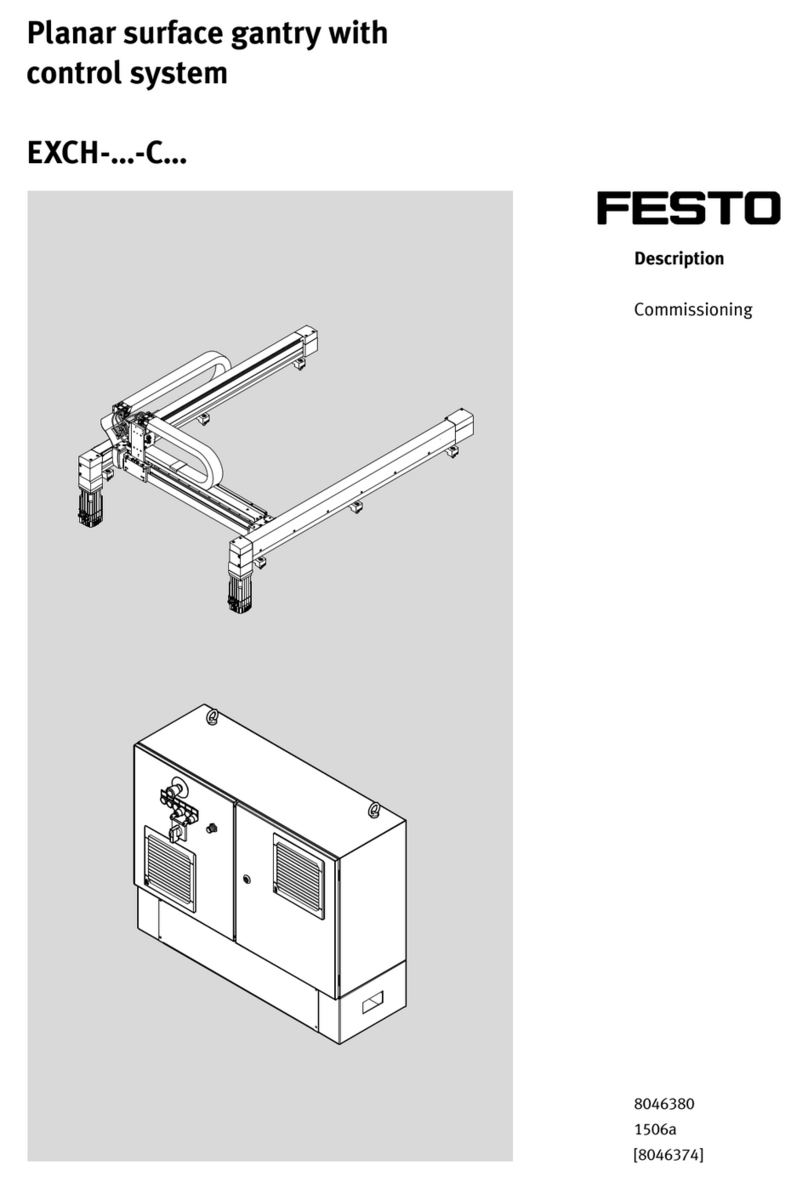Flexco RBP1 Technical Document

RBP1 Belt Positioner
Installation, Operation
and Maintenance Manual
www.flexco.com
www.flexco.com

2RBP1 Belt Positioner
RBP1 Belt Positioner
Serial Number: _____________________________________________________________
Purchase Date:______________________________________________________________
Purchased From: ____________________________________________________________
Installation Date: ____________________________________________________________
Serial number information can be found on the Serial Number Label
included in the Information Packet found in the cleaner carton.
is information will be helpful for any future inquiries or questions
about belt cleaner replacement parts, specications or troubleshooting.

1
Section 1 - Important Information ...................................................................................................2
1.1 General Introduction...........................................................................................................................2
1.2 User Benets .........................................................................................................................................2
1.3 Proper Belt Trainer Selection..............................................................................................................3
Section 2 - Safety Considerations and Precautions ..........................................................................4
2.1 Stationary Conveyors...........................................................................................................................4
2.2 Operating Conveyors...........................................................................................................................4
Section 3 - Pre-Installation Checks and Options..............................................................................5
3.1 Checklist................................................................................................................................................5
3.2 Optional Installation Accessories.......................................................................................................5
Section 4 - Installation Instructions..................................................................................................6
Section 5 - Pre-Operation Checklist and Testing..............................................................................8
5.1 Pre-Op Checklist..................................................................................................................................8
5.2 Test Run the Conveyor ........................................................................................................................8
Section 6 - Maintenance.....................................................................................................................9
6.1 New Installation Inspection................................................................................................................9
6.2 Routine Visual Inspection...................................................................................................................9
6.3 Routine Physical Inspection ...............................................................................................................9
6.4 Roller Replacement Instructions......................................................................................................10
6.5 Maintenance Log................................................................................................................................11
6.6 Maintenance Checklist ......................................................................................................................12
Section 7 - Troubleshooting ............................................................................................................13
Section 8 - Specs and CAD Drawings..............................................................................................14
8.1 Specs and Guidelines .........................................................................................................................14
8.2 CAD Drawing, RBP1 Small ..............................................................................................................15
8.3 CAD Drawing, RBP1 Medium.........................................................................................................16
8.4 CAD Drawing, RBP1 Large ..............................................................................................................17
8.5 CAD Drawing, RBP1 Extra Large....................................................................................................18
Section 9 - Replacement Parts .........................................................................................................19
9.1 Replacement Parts List ......................................................................................................................19
Section 10 - Other Flexco Conveyor Products ................................................................................21
Table of Contents

2RBP1 Belt Positioner
Section 1 - Important Information
1.1 General Introduction
We at Flexco are very pleased that you have selected a RBP1 Belt Positioner™ for your conveyor system.
is manual will help you to understand the installation, operation and maintenance of this product and
assist you in making it work up to its maximum eciency over its lifetime of service.
It is essential for safe and ecient operation that the information and guidelines presented be properly
understood and implemented. is manual will provide safety precautions, installation instructions,
maintenance procedures and troubleshooting tips. In addition, please follow all standard, approved safety
guidelines when working on your conveyor.
If, however, you have any questions or problems that are not covered, please visit our web site or contact our
Customer Service Department:
Customer Service: 1-800-541-8028
Visit www.exco.com for other Flexco locations and products.
Please read this manual thoroughly and pass it on to any others who will be directly responsible for
installation, operation and maintenance of this impact bed. While we have tried to make the installation and
service tasks as easy and simple as possible, this product does however require correct installation and
regular inspection and maintenance to maintain top working condition.
1.2 User Benets
Belt mistracking is a common problem that produces various problems, ranging from belt and structure
damage to product spillage and safety issues. By utilizing the RBP1 Belt Positioner, it is possible to correct a
belt that is mistracking and causing these problems. Multiple units may be required depending on the length
of the mistracking belt.

3
Section 1 - Important Information
1.3 Proper Belt Trainer Selection
Belt Positioner™
PT Max™
Top Side
PT Max™
Return Side
PT Pro™
PTEZ™
PT Smart™
Standard
MODEL APPLICATION RANGE
Belt Positioner™
Return side only, 800 PIW max tension on Small,
Medium and Large; 1200 PIW max tension on
Extra Large. Also works on reversing belts.
PTEZ™Medium-duty belts up to 1600 PIW max tension.
Also works on reversing belts.
PT Smart™
Medium-duty belts up to 1600 PIW max tension.
Belt width + 3" (75mm) idler. Belt thickness 1"
(25mm) maximum.
PT Smart™Underground
Medium-duty belts up to 1600 PIW max tension.
Belt width + 9" (225mm) idler. Belt thickness 1"
(25mm) maximum. Fits underground structure.
PT Pro™
Medium-duty belts 150 PIW min to 1600 PIW max
tension. Belt width 18” - 72” (450 - 1800mm). Also
works on reversing belts.
HD PT Pro™
Heavy-duty belts 300 PIW min to 2400 PIW max
tension. Belt width 48" - 96" (1200 - 2400mm). Also
works on reversing belts.
PT Max™
Heavy-duty belts up to 3000 PIW max
Generally 3/4" to 1" thick (19mm to 25mm)
Belt width 24" - 60" (600 - 1500mm)
HD PT Max™Heavy-duty belts up to 6000 PIW max tension.
Belt width 54" - 84" (1350 - 2100mm)
PT Smart™
Underground
Structure
Conveyor Criteria Belt
Positioner™PTEZ™PT Smart™PT Pro™
Heavy
Duty PT
Pro™
PT Max™
Heavy
Duty PT
Max™
Super
Duty PT
Max™
Top side mistracking No No No No No Yes Yes Yes
Return side mistracking Yes Yes Yes Yes Yes Yes Yes Yes
Reversing Yes Yes No Yes Yes No No No
Belt mistracking to one side Better Better Better Better Better Better Better Better
Belt mistracking to both sides Acceptable Better Best Better Better Best Best Best
Inconsistent tracking problem Good Better Best Better Better Best Best Best
Belt is cupped (heavy) Best ‡ Better ‡ Better Better Better Better Better Better
Belt has edge damage Best Best Good Best Best Good Good Good
Ease of Installation Best Better Good Good Good Good Good Good
Belt has low running tension (150-300 PIW) Good Good Good Good N/A Good N/A N/A
Belt has medium running tension (300-1600 PIW) Better Better Better Better Better Best Best Best
Belt has high running tension (1600+ PIW) N/A N/A N/A N/A Best Better Best Best
Approx. "upstream" effect *∆ 50’ (15 M) 20' (6 M) 20’ (6 M) 20’ (6 M) 20’ (6 M) 50’ (15 M) 50’ (15 M) 50’ (15 M)
Approx. "downstream" effect *∆ 50’ (15 M) 100' – 120'
(30 – 36 M)
120’ – 150’
(36 – 45 M)
100’ – 120’
(30 – 36 M)
100’ – 120’
(30 – 36 M)
150’ – 200’
(45 – 61 M)
150’ – 200’
(45 – 61 M)
150’ – 200’
(45 – 61 M)
‡ Installed on the clean side of the return belt
* Typical results; actual results may vary
∆ Disc idlers have the potential to reduce these numbers

4RBP1 Belt Positioner
Section 2 - Safety Considerations and Precautions
Before installing and operating the RBP1 Belt Positioner it is important to review and understand the following safety
information.
ere are setup, maintenance and operational activities involving both stationary and operating conveyors. Each case
has a safety protocol.
2.1 Stationary Conveyors
e following activities are performed on stationary conveyors:
• Installation • Impact bar replacement • Repairs
• Skirt rubber adjustments • Cleaning
DANGER
DANGER
WARNING
WARNING
WARNING
!
!
!
!
!
It is imperative that OSHA/MSHA Lockout/Tagout
(LOTO) regulations, 29 CFR 1910.147, be followed before
undertaking the preceding activities. Failure to use LOTO
exposes workers to uncontrolled behavior of the impact
bed caused by movement of the conveyor belt. Severe
injury or death can result.
Before working:
• Lockout/Tagout the conveyor power source
• Disengage any takeups
• Clear the conveyor belt or clamp securely
in place
Use Personal Protective Equipment (PPE):
• Safety eyewear
• Hardhats
• Safety footwear
Close quarters and heavy components create a
worksite that compromises a worker’s eyes, feet
and skull.
PPE must be worn to control the foreseeable
hazards associated with conveyor belt
components. Serious injuries can be avoided.
2.2 Operating Conveyors
ere are two routine tasks that must be performed while the conveyor is running:
• Inspection of the sealing performance
• Dynamic troubleshooting
Every belt conveyor is an in-running nip hazard.
Never touch or prod an operating impact bed.
Conveyor hazards cause instantaneous amputation
and entrapment.
Never adjust anything on an operating impact
bed. Unforseeable materials falling into the chute
can cause violent movements of the impact bed
structure. Flailing hardware can cause serious
injury or death.
Conveyor chutes contain projectile hazards. Stay as far
from the trainer as practical and use safety eyewear and
headgear. Missiles can inict serious injury.

5
3.1 Checklist
•Check the model and size of the belt trainer. Is it the right one for your beltline?
• Check the RBP1 Belt Positioner to be sure all the parts are included in the shipment.
• Find the Information Packet in the shipment.
• Review the “Tools Needed” section on the front of the installation instructions.
• Prepare the conveyor site:
- Identify the point(s) of mistracking, expecting 50' (15M) of downstream and upstream inuence.
- Position the unit in the center of the mistracking.
- Optimal location: No closer than 3' (.9M) and no further than 6' (1.8M) from a return roller.
- Remove old tracking devices.
Section 3 - Pre-installation Checks and Options
3.2 Optional Installation Accessories
Flex-Lier™ Conveyor Belt Lier
e Flexco Flex-Lier makes the job of liing the
conveyor belt easy and safe. Using two Flex-Liers,
the belt can be quickly lied out of the way to install
the PT Smart™. e Flex-Lier has the highest safe li
rating available at 4000 lbs. (1810 kg) for Medium and
Large, 6000 lbs. (2750 kg) for XL. And it’s versatile.
It can also be used to li topside or return side belt
for splicing, roller replacement or other maintenance
jobs. Available in three sizes: Medium for belt widths
36" - 60" (900 - 1500mm), Large for belt widths 48" -
72" (1200 - 1800mm), and XL for belt widths 72" - 96"
(1800 - 2400mm).
Flex-Lifter™ Conveyor Belt Lifter
Description
Ordering
Number
Item
Code
Medium Flex-Lifter 36" - 60" (900 - 1500 mm) FL-M 76469
Large Flex-Lifter 48" - 72" (1200 - 1800 mm) FL-L 76470
XL Flex-Lifter 72" - 96" (1800 - 2400 mm) FL-XL 76983
Optional tools can make the installation of the RBP1 Belt Positioner easier and faster.

6RBP1 Belt Positioner
Section 4 - Installation Instructions
Physically lock out and tag the conveyor at the power source
before you begin cleaner installation.
Locating the Positioner
ABC
• Look at the belt on the return side and identify where the belt is mistracking.
• Locate the Positioner in the center of the problem area.
• Generally, if the belt is correctly positioned at the tail pulley (A) so the belt is
center loaded, it will run straight on the top side.
• Another problem area may be at the counter-weight pulley (B and C).
Tail
Pulley
RBP1 Parts List
Rollers
(Rubber-Lagged or Steel)
Set Screws
& Jam Nuts
Mounting Bolts,
Lock Washers
& Nuts
Mounting
Bracket
Inner
Tubes
Frame Adjustment Bolts,
(2) Nuts & Lock Washers
Roller
Retainer
Frame
1. Reposition mounting brackets (Fig. 1). Remove the
mounting brackets from the inner shipping position,
move them down toward the rollers, and remount them
on the outside of the frames. Remove the mounting
bolts, lock washers and nuts from the brackets and set
them aside for Step 4.
Move down
Remove for
later use
Shipping position
Fig. 1
Fig. 2 2. Determine Positioner location on the belt (in the
selected location). Measure an equal distance from a
common point on both sides of the structure and mark
both sides at the measured points (Fig. 2). e unit must
be square to the conveyor.
NOTE: e Positioner should be centered between
two standard return rollers. For general applications--
standard belts up to 72" (1800mm): position the unit no
closer than 3' (.9M) to a return roller and no farther than
6' (1.8M).
4.1 RBP1 Belt Positioner
Tools Needed:
- Tape measure
- (2) 5/8" (16 mm) wrench or crescent wrench
- (2) 1/2" (13 mm) wrench or crescent wrench

7
Section 4 - Installation Instructions
3. Adjust unit for conveyor width.
a. Measure the structure’s inside width from side to side.
b. Loosen the four jam nuts and set screws on the frames
and slide the unit apart to the same dimension as the inside
structure width measurement minus 1/2" (13mm) to ensure
an easy t. Retighten set screws and jam nuts (Fig. 3).
NOTE: e inner tubes between the two frames should be
kept centered to ensure both sides have maximum support.
Center marks on the inner tubes make it easy to see that
the tubes are centered.
4. Mount unit on the conveyor.
Align the unit with the location marks on the structure.
NOTE: Check the slot adjustment range of the frame and
the mounting bracket (Fig. 4). If there is not 4" to 6" of slot
visible, turn the mounting brackets upside down for more slot
adjustment. Clamp or hold the unit in place, drill mounting
bolt holes on each side and secure with mounting bolts, lock
washers and nuts, or weld in place.
5. Adjust Positioner to the belt.
Loosen the two frame adjustment bolts on the side the belt is
running o and apply pressures as follows (Fig. 5):
a. Push down on unit until roller contacts 6" to 8" (150 to
200mm) of the belt. e roller on the other side should be set
to contact the belt 4" (100mm) or less. Tighten all nuts.
b. Allow the conveyor to run a minimum of ve revolutions
and evaluate the results.
IMPORTANT: If more correction is needed, increase the
roller-to-belt contact pressure on the side running o; if
necessary, decrease contact pressure on the opposite side.
Fig. 3
Fig. 5 FRAME ADJUSTMENT
BOLTS
(on inside of bracket)
Loosen for Adjustment
MAINTENANCE
e rollers on the Positioner are sealed for life.
Center Mark
SET SCREWS
(2 on opposite side)
Fig. 4
Not enough adjustment
range in slot
Increased range of
slot adjustment
MOUNTING
BRACKET
(upside-down)
MOUNTING
BRACKET
(standard)
FRAME
FRAME
Structure
4.1 RBP1 Belt Positioner

8RBP1 Belt Positioner
Section 5 - Pre-Operation Checklist and Testing
• Run the conveyor for at least 15 minutes and conrm the belt is tracking properly.
• If belt is still mistracking too far to one side, increase the roller-to-belt contact pressure on the side
running o; if necessary, decrease contact pressure on the opposite side.
• Recheck that all fasteners are tight
• Apply all supplied labels
• Be sure that all installation materials and tools have been removed from the belt and conveyor area
5.1 Pre-Op Checklist
5.2 Test Run the Conveyor

9
Section 6 - Maintenance
Flexco belt trainers are designed to operate with minimum maintenance. However, to maintain superior performance
some service is required. When the trainer is installed a regular maintenance program should be set up. is program
will ensure that the trainer operates at optimal eciency, and problems can be identied and xed before any damage
is done to the belt, the trainer, other conveyor components, or structure.
All safety procedures for inspection of equipment (stationary or operating) must be observed. e RBP1 Belt
Positioner is in direct contact with the moving belt. Only visual observations can be made while the belt is running.
Service tasks can be done only with the conveyor stopped and by observing the correct lockout/tagout procedures.
6.1 New Installation Inspection
Aer the RBP1 Belt Positioner has run for 15 minutes a visual inspection should be made to ensure the trainer
is performing properly. Make adjustments as needed.
6.2 Routine Visual Inspection (every 2-4 weeks)
A visual inspection of the RBP1 Belt Positioner can determine:
• If the belt is tracking as required
• If the main frame is free of material and rolling properly
• If there is damage to the main frame or other components
• If the rollers are turning freely and without damage
If any of the above conditions exist, a determination should be made on when the conveyor can be
stopped for trainer maintenance.
6.3 Routine Physical Inspection (every 6-8 weeks)
When the conveyor is not in operation and properly locked and tagged out, a physical inspection of the trainer
to perform the following tasks:
• Clean material buildup o the trainer and components.
• Closely inspect main roller for free movement and wear. Replace if needed.
• Closely inspect complete unit for damage.
• Inspect all fasteners for tightness and wear. Tighten or replace if needed.
• When maintenance tasks are completed, test run the conveyor to ensure the trainer is
performing properly.

10 RBP1 Belt Positioner
6.4 Roller Replacement Instructions
Section 6 - Maintenance
2. Remove roller by unbolting (4) Roller Retainers (Fig. 1).
1. Remove tension from belt. Use a Flex-Lier or other appropriate liing equipment to li the belt
approx. 3" (75mm) o the trainer.
3. Install new roller and re-bolt Roller Retainers (Fig. 1). Conrm roller turns smoothly.
4. Lower the belt. Ensure belt completely contacts rollers. Lower brackets if there is not good contact.
Tighten all bolts.
5. Refer to pre-op checklist (page 8) before running the conveyor. If belt is still mistracking, refer to
Section 5.2 on page 8.
CAUTION: Components may be heavy. Use safety-approved liing procedures.
Physically lock out and tag the conveyor at the power source
before you begin cleaner installation.
Tools Needed:
- Tape measure
- 5/16" (8 mm) wrench or crescent wrench
Fig. 1
Roller Retainer
Roller Retainers
Roller Retainer
(hidden)

11
Section 6 - Maintenance
6.5 Maintenance Log
Conveyor Name/No.
Date: Work done by: Service Quote #
Activity:
Date: Work done by: Service Quote #
Activity:
Date: Work done by: Service Quote #
Activity:
Date: Work done by: Service Quote #
Activity:
Date: Work done by: Service Quote #
Activity:
Date: Work done by: Service Quote #
Activity:
Date: Work done by: Service Quote #
Activity:

12 RBP1 Belt Positioner
Section 6 - Maintenance
6.6 Belt Trainer Maintenance Checklist
RBP1 Belt Positioner:
Beltline Information:
Idler Roller Life (Right Side):
Idler Roller Life (Le Side):
RBP1 Frame Condition:
Overall RBP1 Performance:
Other Comments:
Belt Speed Belt ickness
Appearance: Comments:
Location: Comments:
Maintenance: Comments:
Performance: Comments:
(Rate the following 1 - 5; 1=very poor, 5=very good)
Date rollers installed: Date rollers inspected: Estimated roller life:
Date rollers installed: Date rollers inspected: Estimated roller life:
Good Bent Rusted
Roller condition:
Roller condition:
Beltline Number:
Belt Width: 18" 24" 30" 36" 42" 48" 54" 60" 72" 84" 96"
Belt Condition:
Serial Number:
(450mm) (600mm) (750mm) (900mm) (1050mm) (1200mm) (1350mm) (1500mm) (1800mm) (2100mm) (2400mm)

13
Section 7 - Troubleshooting
Problem Possible Cause Possible Solutions
Little to no eect on trouble
area of belt
Unit installed in wrong location Relocate in the center of problem area of belt
Incorrect tension on unit Lower height of unit to provide 1/2" - 1" (13-25mm)
pressure on belt
Unit mis-adjusted Go to step 5 of Installation Instructions
Buildup on main roller Clean unit
Belt not correcting enough Unit mis-adjusted Go to step 5 of Installation Instructions
Belt moving over too much Unit mis-adjusted Go to step 5 of Installation Instructions
Roller not turning
Buildup on main roller Clean unit
Roller bearing bad Replace roller

14 RBP1 Belt Positioner
Section 8 - Specs and CAD Drawings
8.1 Specs and Guidelines
Application Guidelines
• Belt Splice........................................... Mechanically Fastened/Vulcanized
• Belt Speed........................................... 1000 FPM (5M/sec)
• Belt Direction...................................... Reversing
Use next larger size for belt widths between ranges.
• Optimal location: no closer than 3' (.9M) and no
further than 6' (1.8M) from a return roller.
• All rollers are “sealed for life”. No regreasing
maintenance is required.
• MSHA approved.
13 1/2" (343mm) Max
Adjustment Range
Belt Width Specifications
Size
Belt Width
(Min-Max)
Positioner Width
(Min-Max)
in. mm in. mm
Small 18-24 450-600 24-34 600-850
Medium 30-48 750-1200 34-56 850-1400
Large 54-72 1350-1800 56-83 1400-2075
Extra Large 72-96 1800-2400 72-120 1800-3000
Roller Dimensions
Size
Length Diameter
in. mm in. mm
Small 9 225 5 125
Medium 13 325 5 125
Large 19 475 5 125
Extra Large 21 525 6 150
Roller Specifications
Specification Rubber-Lagged Steel
Material STEEL and 3/8"
RUBBER STEEL
Durometer 60 N/A
Rating CEMA D
(XL is CEMA E)
CEMA D
(XL is CEMA E)
Bearings 6305 Sealed Ball
Bearing
6305 Sealed Ball
Bearing
Shaft Diameter 1" (25mm) 1" (25mm)
Wall Thickness 9 Gauge (.148)
(XL - 1/4")
9 Gauge (.148)
(XL - 1/4")
Specific Gravity Over 1 Over 1
Working Temperature -4° to 220° F -4° to 220° F
-20° to 104° C -20° to 104° C
Grease & Chemical
Resistance Good Good
Sticky Material
Performance Excellent Good

15
Section 8 - Specs and CAD Drawings
8.2 CAD Drawing - RBP1 Belt Positioner- Small

16 RBP1 Belt Positioner
Section 8 - Specs and CAD Drawings
8.3 CAD Drawing - RBP1 Belt Positioner- Medium

17
Section 8 - Specs and CAD Drawings
8.4 CAD Drawing - RBP1 Belt Positioner- Large

18 RBP1 Belt Positioner
Section 8 - Specs and CAD Drawings
8.5 CAD Drawing - RBP1 Belt Positioner- Extra Large
Table of contents
Popular Valve Positioner manuals by other brands
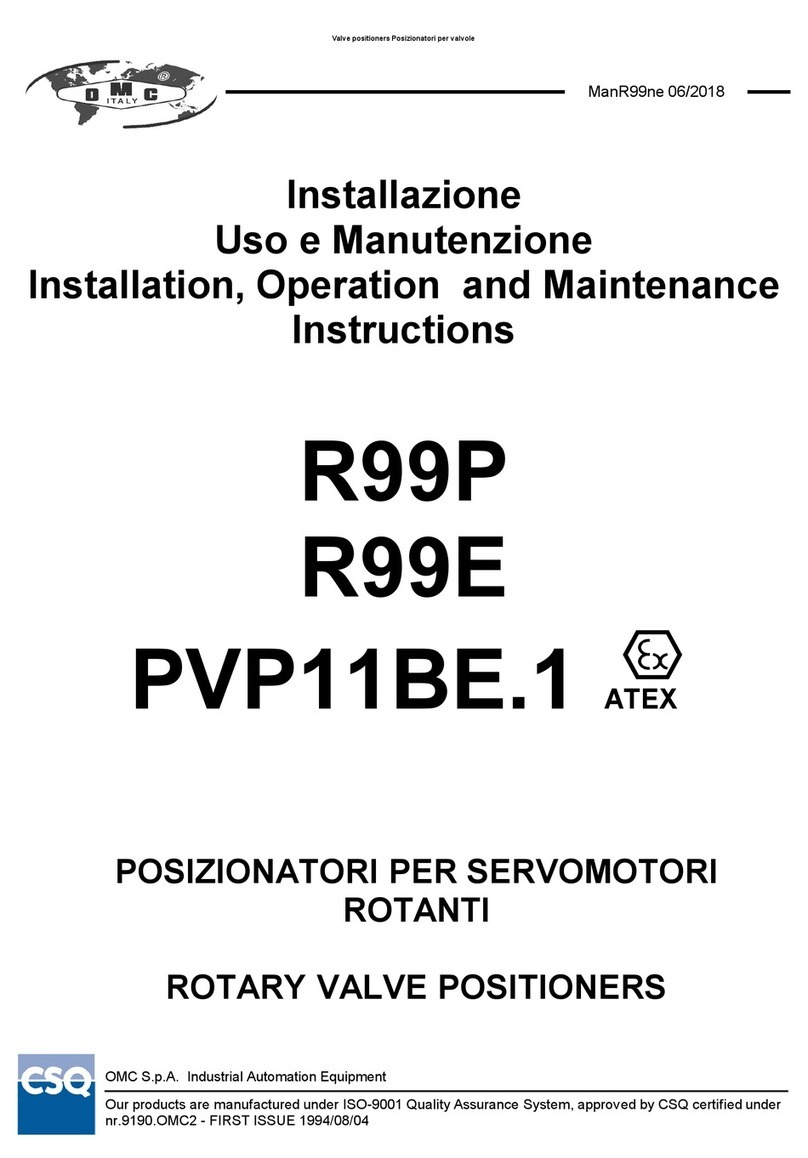
OMC
OMC R99P Installation, operation and maintenance instructions
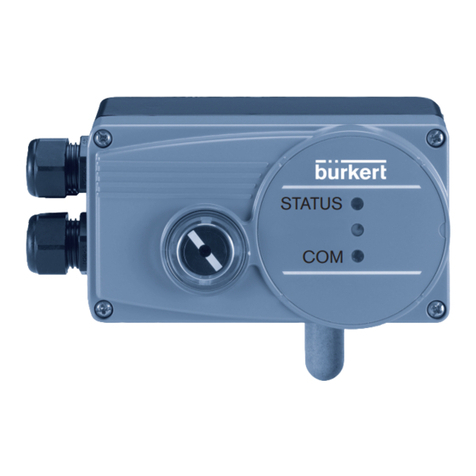
Burkert
Burkert 8791 REV.2 operating instructions

W.E. Anderson
W.E. Anderson 185 Series Installation and operating instructions
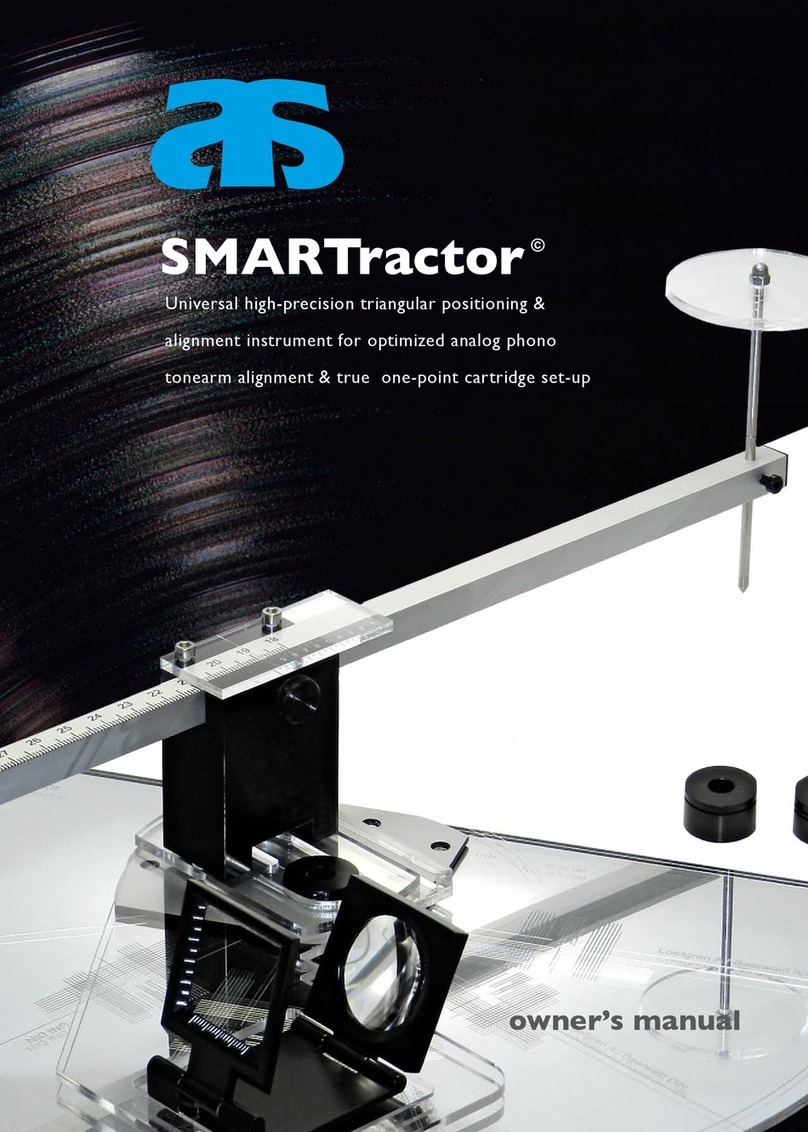
Acoustical Systems
Acoustical Systems SMARTractor owner's manual
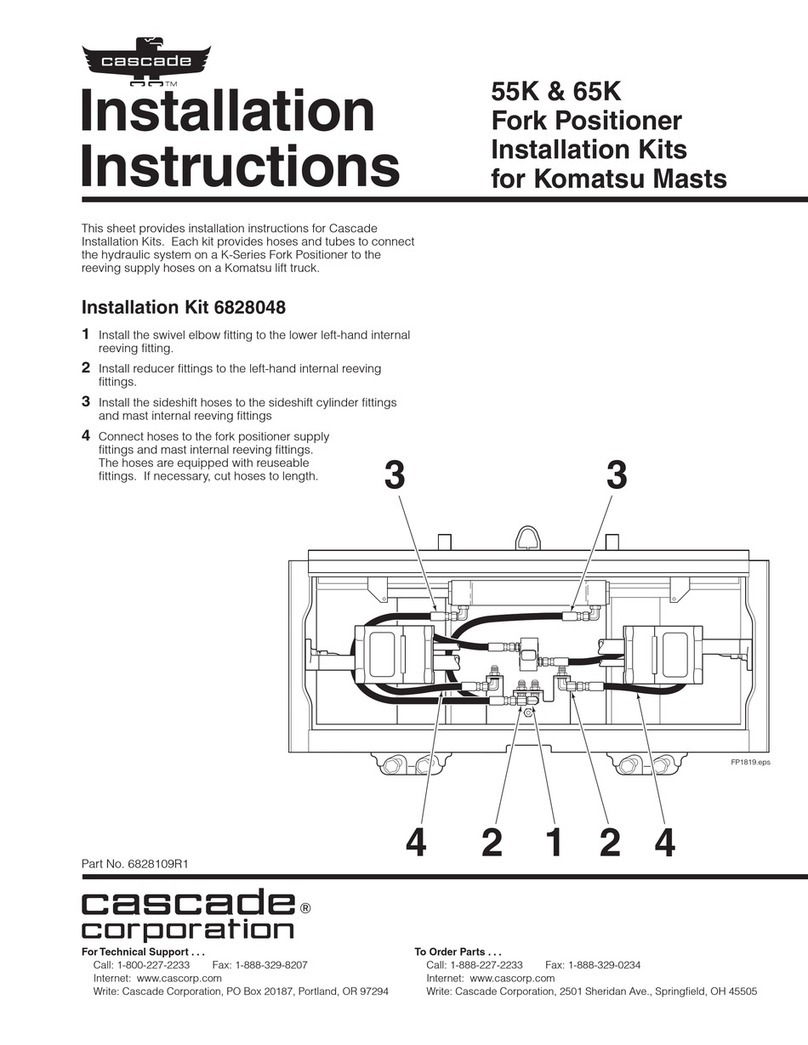
cascade corporation
cascade corporation 55K installation instructions
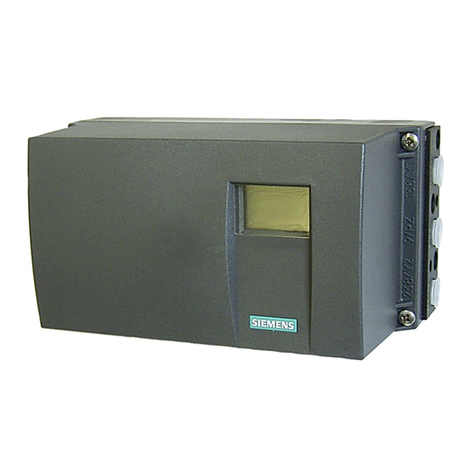
Siemens
Siemens 6DR50 Series operating instructions
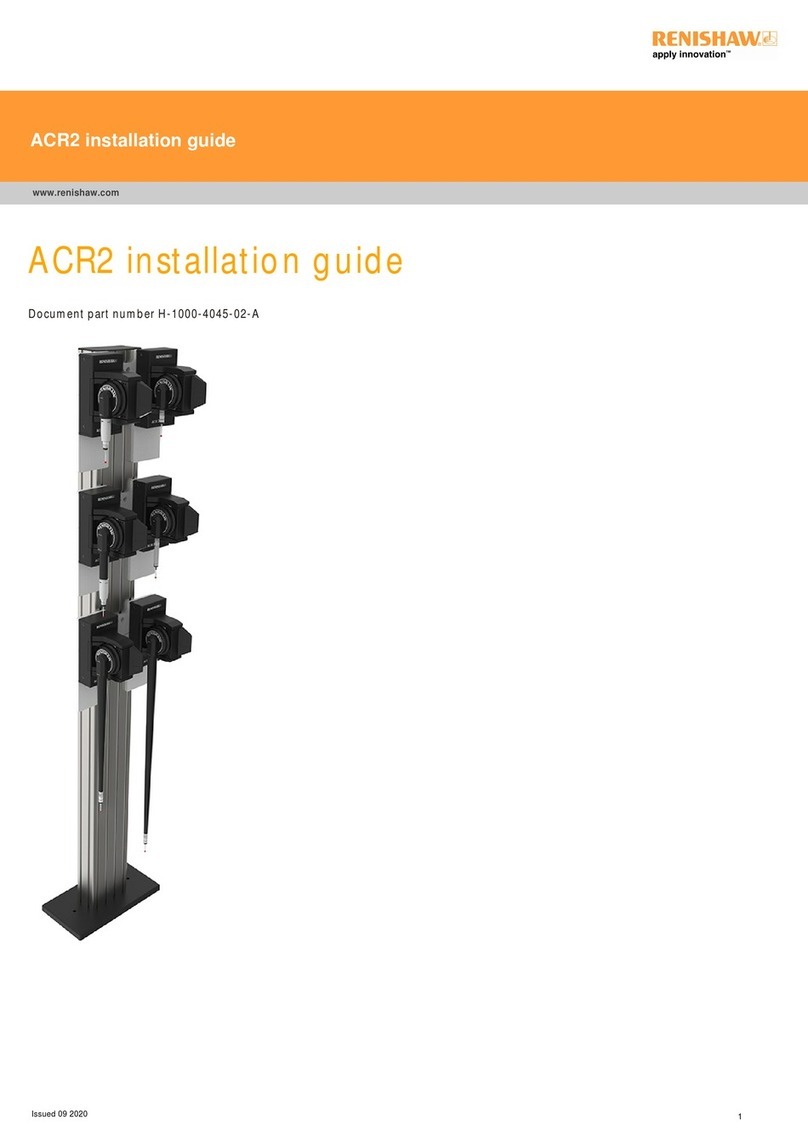
Renishaw
Renishaw ACR2 installation guide
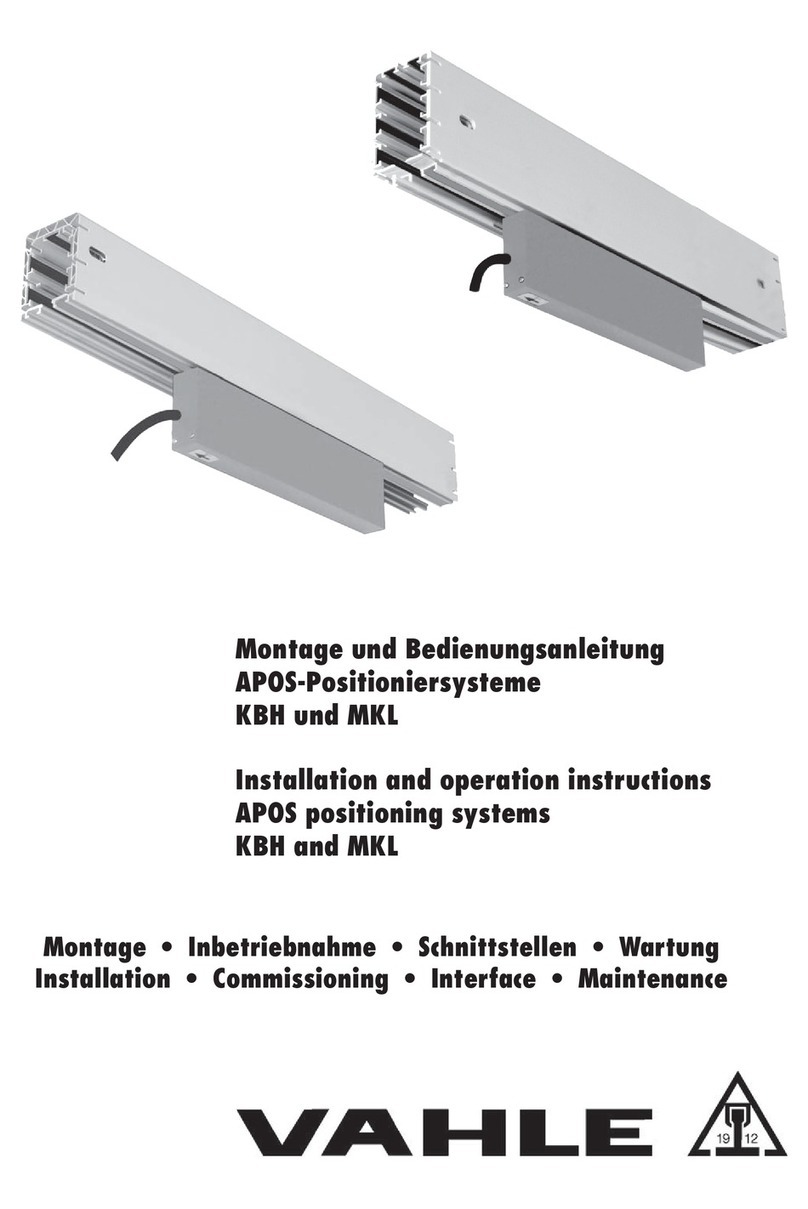
Vahle
Vahle Apos KBH Series Installation and operation instruction manual
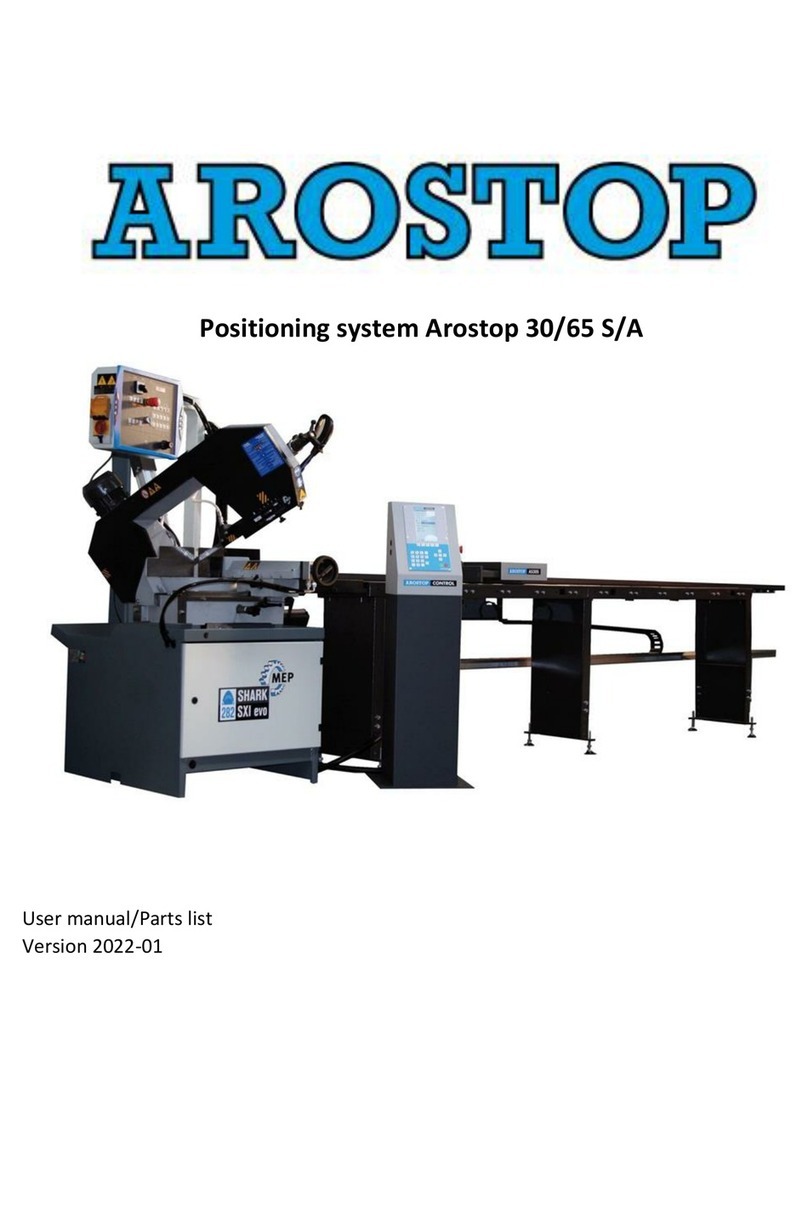
AROSTOP
AROSTOP 30 S/A User manual and parts list
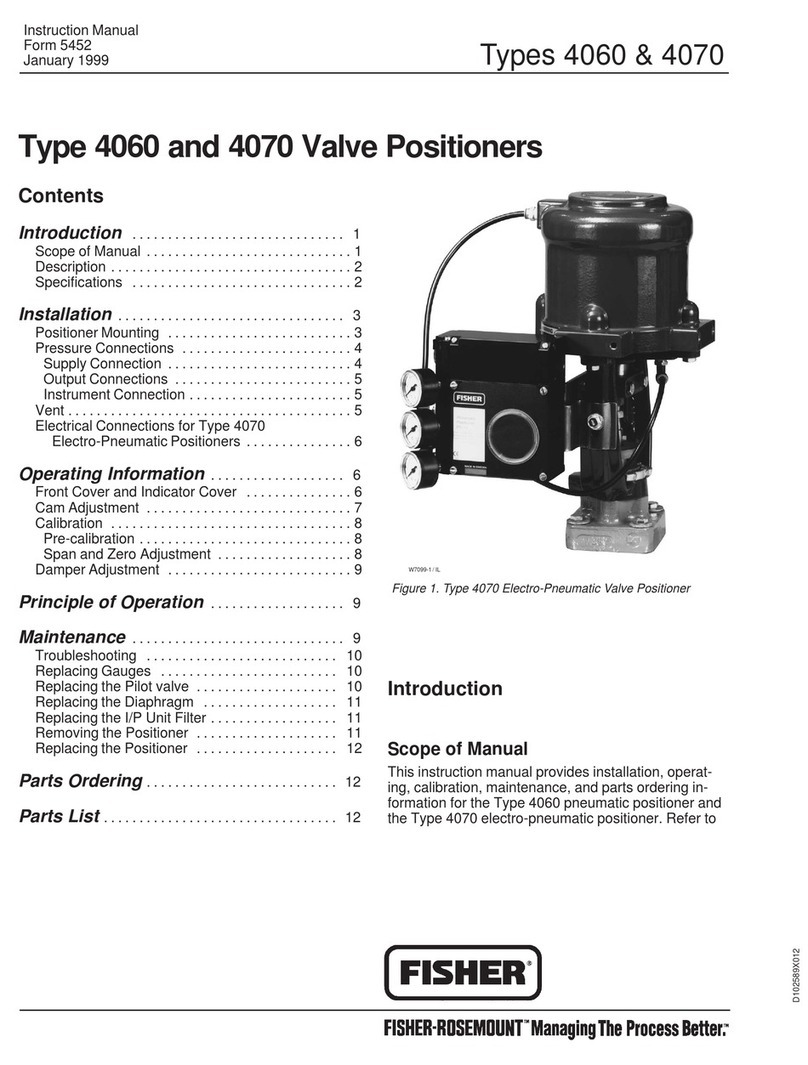
Fisher
Fisher 4070 instruction manual

Siemens
Siemens SIPART PS2 Compact operating instructions
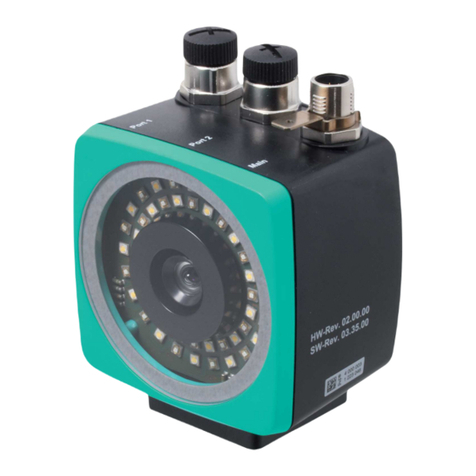
Pepperl+Fuchs
Pepperl+Fuchs PGV100-F200A-B25-V1D manual
